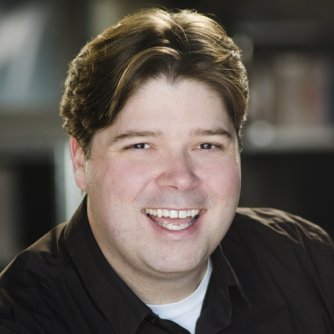

The giant, colorful paintings in the Clyfford Still Museum in Denver tower over visitors. And they recently inspired a unique piece of music: Playground Ensemble made the first studio recording of the piece for an episode of Centennial Sounds, a podcast about 21st century composers from CPR Classical.
Nathan Hall, the composer who wrote the piece, explored a massive archive of Still’s writings in a part of the museum that’s off limits to most visitors. Hall found hundreds of letters and journal entries starting early in Still’s career and leading up to his death in 1980. It’s a trove of letters and journal entries that give a glimpse of the painter’s personality and drive. And it’s where Hall says his music began to come into focus.
He decided to give the painter’s words to a narrator, and set those words to music.
“When I hang a painting I would have it say: Here I stand,” the narrator says at one point. “Proud, alive naked, unafraid. If one does not like it he should turn away,” he says at another.
Jessie de la Cruz, the museum’s archivist, helped Hall comb through the Still collection. She says it includes books about Still, old photographs of exhibitions and even a catalog of his record collection.
De la Cruz grabs a book of Still’s writings off the shelf, and reads it aloud.
“The ability to create a cliche and build it into a premise is the mark of a successful art critic. And no group has been more gullible in swallowing them than artists themselves,” she reads. “That’s just page one.”
But Still had a dual personality. He was sage-like, almost spiritual, when he wrote about being an artist, de la Cruz says. She reads more: “I have great delight in the preciousness of color and line and form. But I would have it incidental to greatness of spirit and idea.”
“It really gives him much more depth,” she says. “You can tell his art was his church.”
Those two sides of Still's personality drove him to become a truly unique painter. He was an influential abstract expressionist, similar to Jackson Pollack, but not as well known. In fact, Clyfford Still trashes Pollack’s work in his writing. He compared it to automobile paint.
All of that tension is what intrigued composer Nathan Hall. He wanted his music to capture Still’s vision, ambition and complexity.
“There’s this moment where Clyfford Still says, ‘I know my way, my direction. I have committed myself to the possibility of absolute failure, absolute responsibility for my acts,’” Hall says. But the music underneath those words sounds a little less confident. The clarinet and percussion sound like they stumble. It's the backing track for a bold artist who finds his footing as he goes along, “Almost like we’re stumbling toward failure but he catches himself really quickly and the music just jumps right back on track.”
Those subtleties underline the story Hall found in the museum archive. Still sounded ambitious and prickly early on. He sounded frustrated in his prime, and bitter toward a world that didn’t appreciate his art.
“Genius is never forgiven even when it is killed!” the narrator reads.
But Hall says Still softened up a bit in his later years. He moved to rural Maryland and pulled back from the pressures of the art world.
“And his letters to family and friends, you can see they change their tone a little bit. It’s not about, ‘So-and-so wanted my painting and I said no.’ And, ‘So-and-so is a fraud because he paints like this other guy.’ It’s more like, ‘Oh, my wife Pat and I are sitting out on the porch. It’s a beautiful day.’”
“The world kind of comes into his life a little more. He lets it in a bit more,” Hall says.
Two of Still's lines really stuck with the composer.
“The truth is a lie in the wrong mouth," reads one.
"Everybody wants a priest to worship,” reads another.
Hall says those lines hit on what made Still's worldview so compelling, even when he sounded like a jerk. Hall says it’s good advice for anyone trying to find their voice.
“It made me think there’s no one right way to do something, or no best way to make art,” Hall says. “Everyone’s own expression is the truth. That’s what it’s about. It’s not about some higher up saying this is good, this is bad, or you’re in and you’re out.”
“Maybe it should be the other way around,” he adds. “There’s so many amazing people on the bottom, all these these amazing artists doing amazing things. Maybe they don’t need to be worshipping the priests at the top.”
Hall called the piece “Notes From Clyfford Still.” One of the first performances took place in the Clyfford Still Museum, where Hall’s music and Still’s colorful words came together surrounded by those big, bold paintings.









